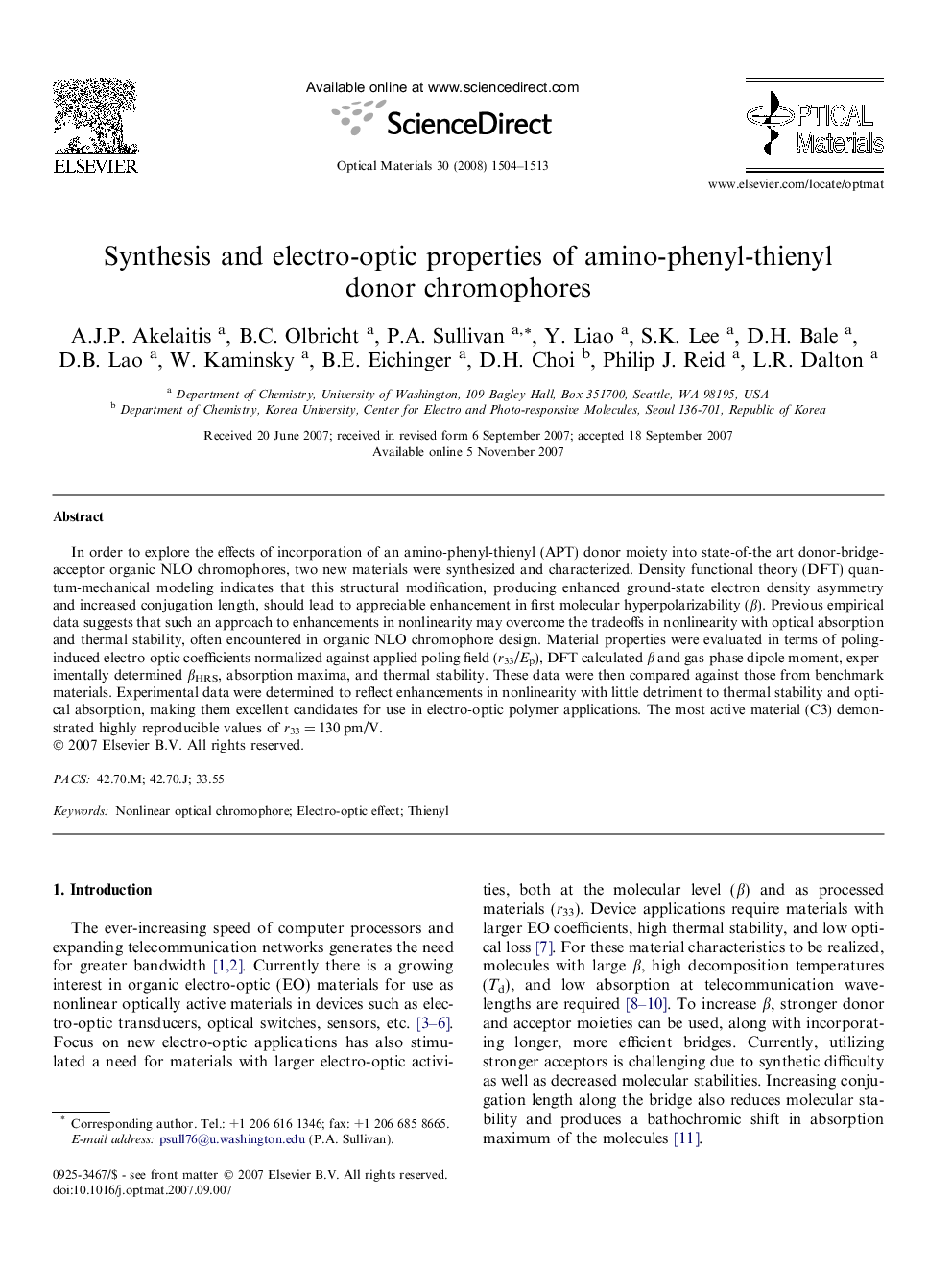| Article ID | Journal | Published Year | Pages | File Type |
|---|---|---|---|---|
| 1497153 | Optical Materials | 2008 | 10 Pages |
Abstract
In order to explore the effects of incorporation of an amino-phenyl-thienyl (APT) donor moiety into state-of-the art donor-bridge-acceptor organic NLO chromophores, two new materials were synthesized and characterized. Density functional theory (DFT) quantum-mechanical modeling indicates that this structural modification, producing enhanced ground-state electron density asymmetry and increased conjugation length, should lead to appreciable enhancement in first molecular hyperpolarizability (β). Previous empirical data suggests that such an approach to enhancements in nonlinearity may overcome the tradeoffs in nonlinearity with optical absorption and thermal stability, often encountered in organic NLO chromophore design. Material properties were evaluated in terms of poling-induced electro-optic coefficients normalized against applied poling field (r33/Ep), DFT calculated β and gas-phase dipole moment, experimentally determined βHRS, absorption maxima, and thermal stability. These data were then compared against those from benchmark materials. Experimental data were determined to reflect enhancements in nonlinearity with little detriment to thermal stability and optical absorption, making them excellent candidates for use in electro-optic polymer applications. The most active material (C3) demonstrated highly reproducible values of r33 = 130 pm/V.
Related Topics
Physical Sciences and Engineering
Materials Science
Ceramics and Composites
Authors
A.J.P. Akelaitis, B.C. Olbricht, P.A. Sullivan, Y. Liao, S.K. Lee, D.H. Bale, D.B. Lao, W. Kaminsky, B.E. Eichinger, D.H. Choi, Philip J. Reid, L.R. Dalton,
